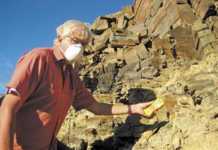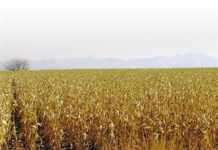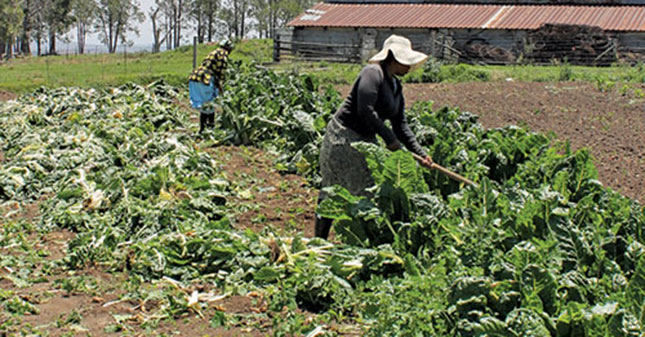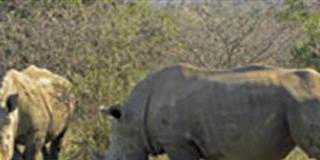
When and why did you become interested in studying the Karretjie People?
In 1990 I was driving through the back roads of the Karoo with a colleague from the US when we spotted a family travelling in a donkey cart. Asked who they were, I could only guess – wrongly as it turned out – that they were farm workers on their way home from a nearby town. During sabbatical leave the following year I explored the Karoo, finding many such families travelling in their donkey carts. They favoured the deserted, dusty side roads and camped in makeshift shelters at outspans.
I discovered a little known but fascinating way of life that had me closely involved with the Karretjie People for two decades. My area of interest has long been in human mobility and urbanisation. I have worked with migrant labour groups, war refugees in Mozambique and the Tsigane gypsies in Switzerland. The gypsies of South Africa are the the Karretjie People of the Karoo.
So who are these people, how many have survived and what is their future?
They are the direct descendants of the earliest inhabitants of the Great Karoo, the /Xam (Bushmen/San), and to a lesser extent the Khoekhoen (Griqua/Korana). Oral tradition and early 1700s accounts by colonial explorers and pioneer farmers confirm their presence, but also the hostile interaction and competition for resources between the / Xam and later arrivals. As the newcomers hunted ‘their’ game, so the / Xam helped themselves to settler farmers’ livestock.
The result was that the indigenous people were, according to historical accounts, mercilessly persecuted in a type of war. There were fatalities on both sides but the Bushmen became the hunted, with farmers gathering for a ‘hunt’ or commandos going out on ‘Bushmen shoots’. The men who survived fled into the hills while the women and children were taken to the farms as ‘tame Bushmen’ who worked as labourers. (Remember, this happened hundreds of years ago.)
Bushmen boys grew up learning the various tasks and skills associated with sheep farming. With the advent of larger flocks, fencing and intensification, the descendants of these people responded to the need for shearers to be available on different farms at different times of the seasonal cycle. During the course of our study we genetically tested, through DNA analysis, a number of the Karretjie People.
The techniques enabled scientists to reconstruct the hereditary lines of individuals and their families. The results confirmed the / Xam, and to a lesser extent Khoekhoen, as ancestors of the Karretjie people, as well as their ‘post-capture’ history. The genetic fingerprint of the male line shows a strong external influence, as opposed to that of the female line which is significantly /Xam.
Furthermore, the genome (genetic sample) of the Karretjie People shows the oldest lineages found in human populations. While San is considered the politically correct name for the /Xam, they are quite comfortable being called Bushmen. San is actually a derogatory name given to these hunter-gatherers by the cattle-herding Khoekhoen – it means ‘without livestock’ and insinuates they were thieves.
What communication problems did you have with the Karretjie people or resident farmers when you started the study?
I was initially regarded with the utmost suspicion by Karretjie People, farmers and townsfolk alike. To the Karretjie People I represented a ‘baas’ stereotype and it took some time to win their confidence, develop rapport and break down the conditioned mindsets of the district’s people. At first, I couldn’t enjoy the renowned Karoo farmers’ hospitality.
My visits to the Karretjie People, spending nights around their camp fires and my growing friendship with them did not follow the conventions of accepted social custom. One farmer referred to me as “daardie mal professor”. For the Karretjie People, I suppose it was difficult to understand that I was interested in their story as Karoo people, not as shearers with particular skills to be tolerated only because they rendered an essential service. Eventually farmers, and other people in the region, who became more familiar with the rationale of the project, showed a keen interest and even started doing some ‘research’ of their own in the shearing sheds.
How did this relationship progress?
The Karretjie People ultimately shared freely with me the weal and woe of nomads on the fringes of society. This made it possible for me to record their oral tradition and way of life. This pattern of survival was a remarkable response and adaptation to a particular need in the agricultural economy of the Karoo. They’d become a floating population of shearers, always available when a farmer had a flock of sheep or goats to be shorn at a particular time of the year. They were ‘just there’ at the right time.
What did you learn from them?
The Karretjie People taught me about being human, about the human condition. Despite their dire circumstances (and the social malfunction stemming from this), these poorest of the poor – ’invisible’ to most South Africans – have an indomitable spirit, and they approach each new day with a positive attitude. Their life view is remarkably coloured by humour, inherent in their nature.
What does the future hold for them?
Twenty years ago there were more than 1 000 of these people, young and old, mostly ignored, even by the census. Their small place in the sun was destroyed by changes in the agricultural landscape. Economics forced sheep farmers to ‘get bigger or get out’. Game farms proliferated. Wool farming gave way to more mutton production, while organised, mechanised shearing teams displaced the hand-shearing service the Karretjie People rendered.
Today the Karretjie People are rapidly disappearing from the back roads of the Karoo and are, instead, found squatting on the outskirts of towns in the region. More often than not now without their carts and donkeys and no longer mobile. A few are retired on farms. Perhaps 100 remain. They’re getting old, along with the wool farmers. Although we, and various farm schools in the area, have organised adult skills and literacy training and pre-school education for children, the future for the Karretjie People does not look bright.
In general, they are ill-equipped to compete effectively in what is already a tough labour market in this arid territory. They have a permanent ‘window of their lives’ exhibition in the Colesberg Kemper Museum. Let us hope that they survive, humankind’s living legacy, despite the prejudice and hardship they endure in the 21st Century.
For more information on Roots and Routes – Karretjie People of the Great Karoo, email Prof De Jongh at [email protected] or contact Laetitia Theart on 012 429 3448 or at [email protected].













